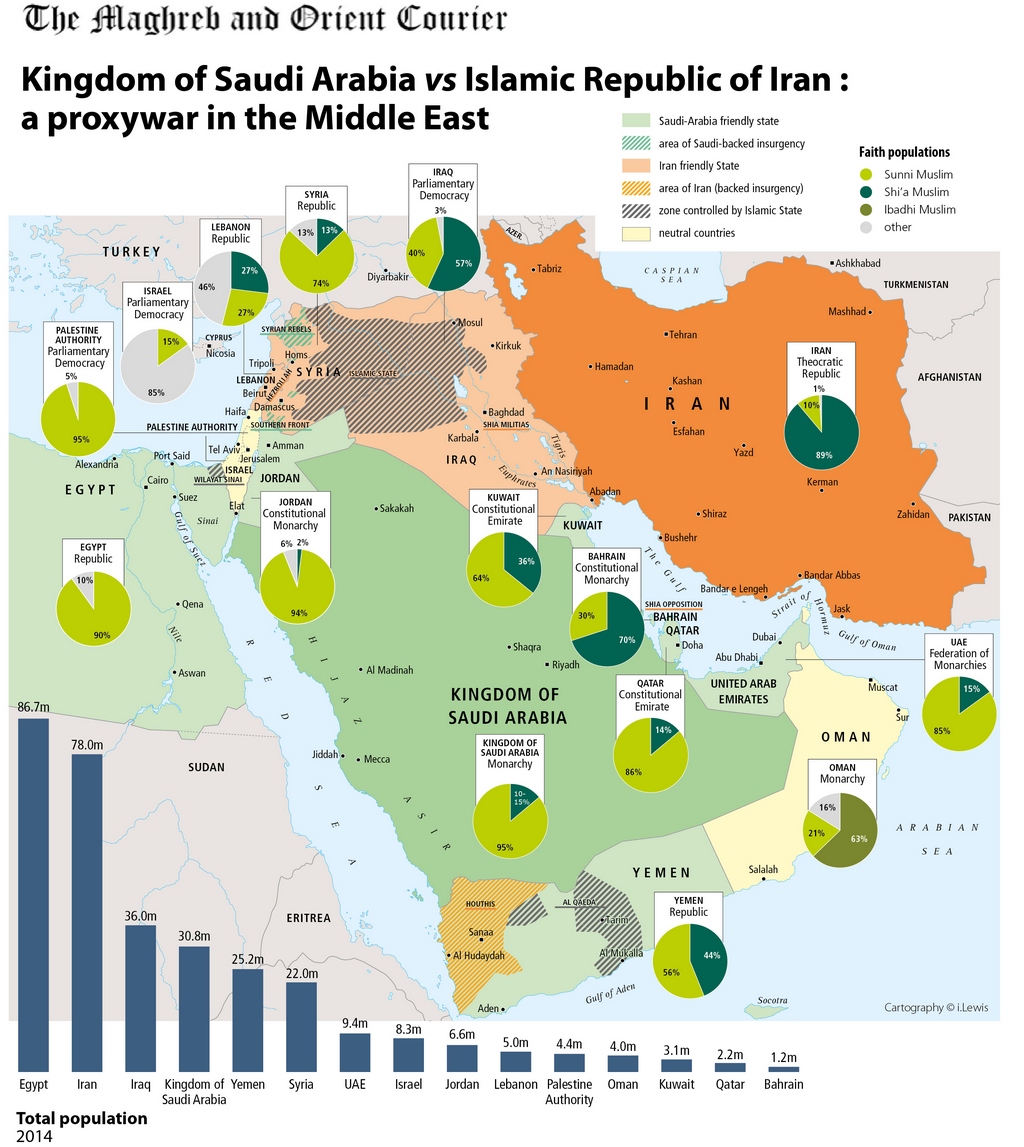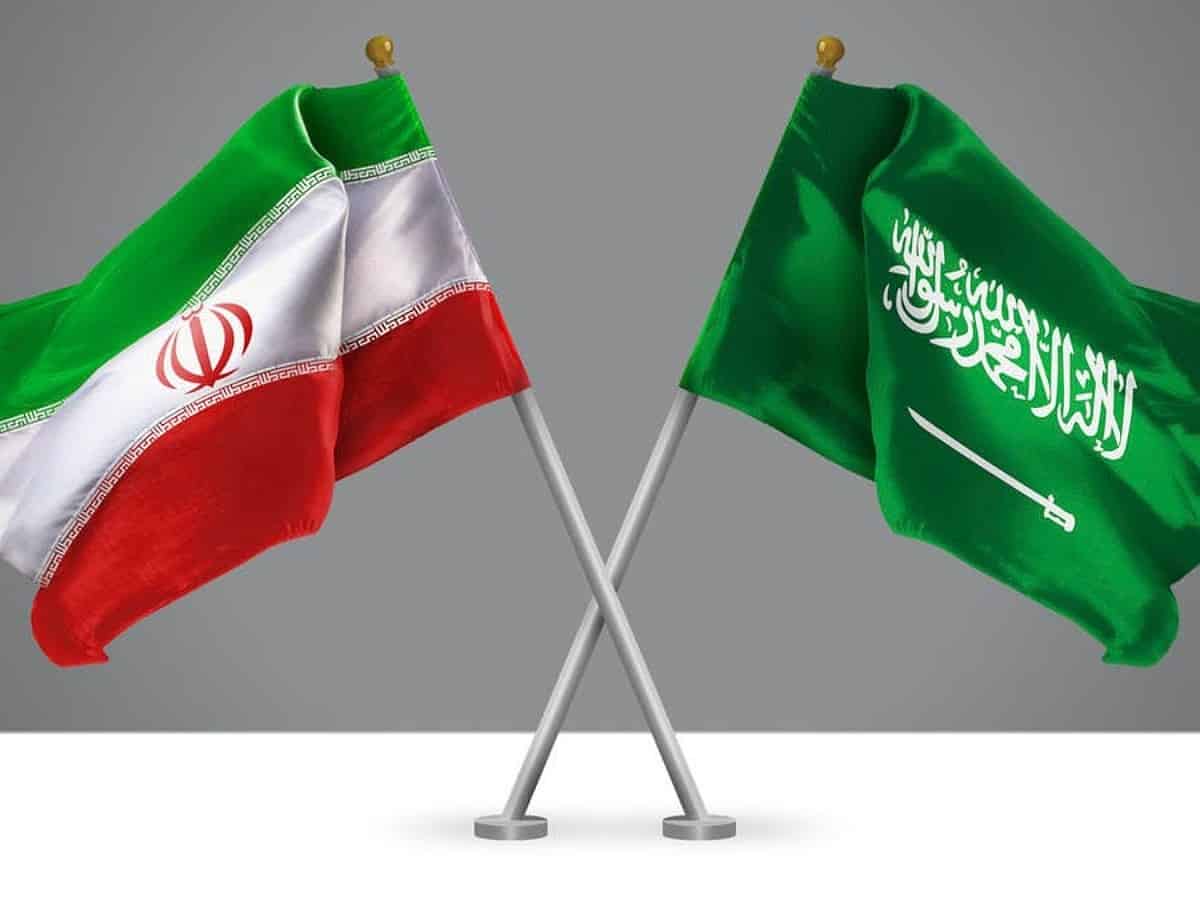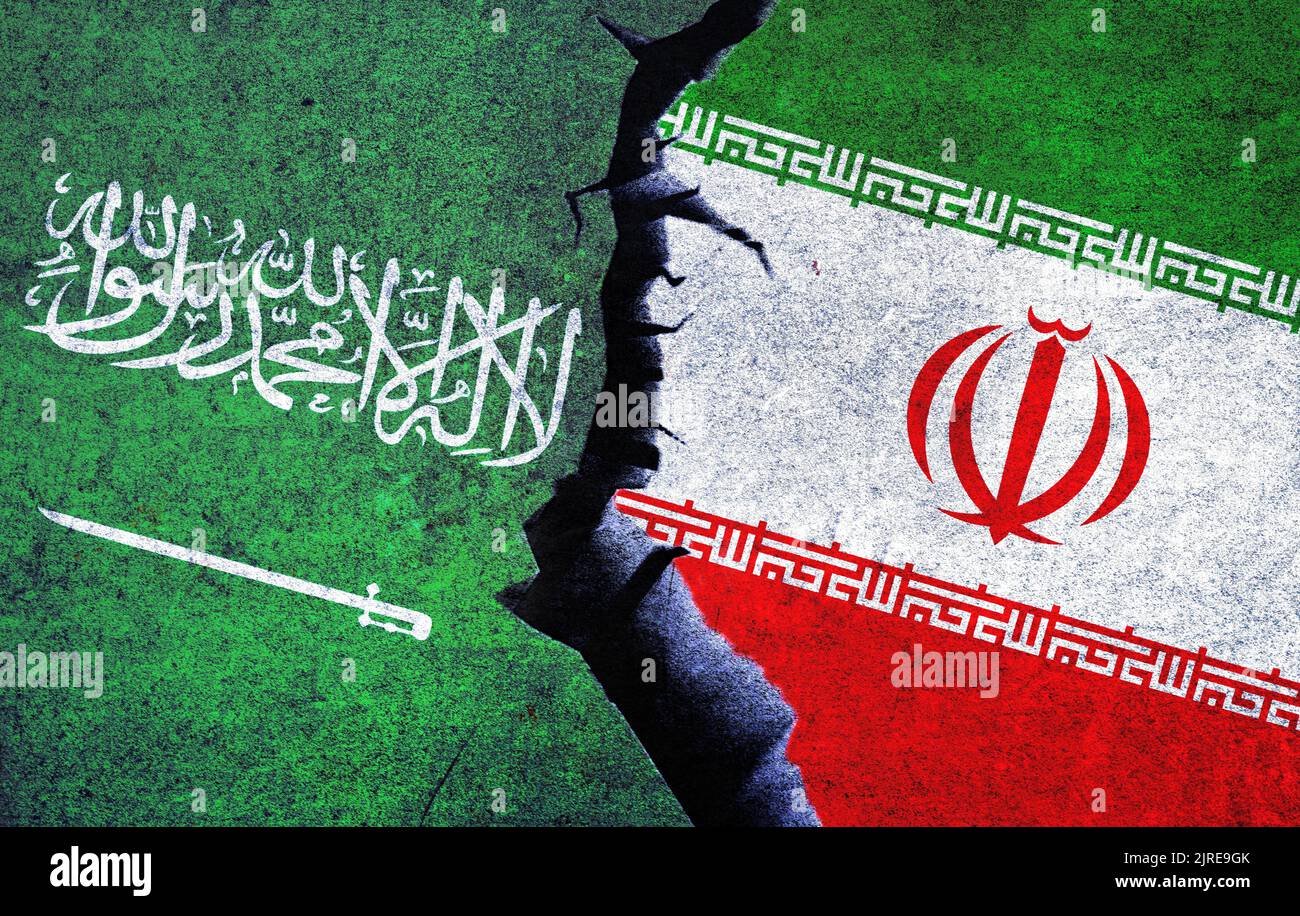Saudi Arabia & Iran: From Deep-Seated Rivalry To Tentative Rapprochement
For decades, the relationship between Saudi Arabia and Iran has been a complex tapestry woven with threads of rivalry, mistrust, and geopolitical competition. These two regional powerhouses, often seen as diametrically opposed, have historically been regional rivals, divided by sectarian, political, and geopolitical differences. Their strained ties have profoundly impacted the stability of the Middle East, influencing conflicts from Yemen to Syria and beyond. Understanding the dynamics of their relationship is crucial for comprehending the broader regional landscape.
Yet, recent developments suggest a potential, albeit cautious, shift in this long-standing dynamic. While deep-seated skepticism remains, particularly from Riyadh, both nations have taken significant steps towards de-escalation and re-engagement. This article delves into the historical roots of their rivalry, examines the catalysts for their recent diplomatic thaw, and explores the challenges and opportunities that lie ahead for Saudi Arabia and Iran as they navigate a new, uncertain chapter in their complex relationship.
Table of Contents
- A Legacy of Division: Understanding the Saudi-Iran Rivalry
- Shifting Sands: The Road to Diplomatic Re-engagement
- Points of Convergence: Emerging Areas of Cooperation
- Persistent Skepticism and Lingering Tensions
- The Red Sea and Regional Security Dynamics
- Nuclear Ambitions and Regional Stability
- Navigating External Pressures: Israel, US, and Regional Conflicts
- The Path Forward: Challenges and Opportunities for Saudi-Iran Relations
A Legacy of Division: Understanding the Saudi-Iran Rivalry
The animosity between Saudi Arabia and Iran is not a recent phenomenon but a deeply entrenched historical reality. Their rivalry is multifaceted, stemming from a complex interplay of religious, political, and geopolitical factors that have shaped the Middle East for decades. Understanding these foundational divisions is essential to grasp the significance of any attempts at reconciliation between Saudi Arabia and Iran.
Sectarian and Geopolitical Fault Lines
At its core, the rivalry often manifests along sectarian lines, with Saudi Arabia, a Sunni-majority kingdom, positioning itself as the leader of the Sunni Islamic world, and Iran, a Shiite-majority Islamic Republic, as the champion of Shiite Muslims globally. This religious divergence has been exploited and exacerbated by political ambitions, with both nations vying for regional hegemony and influence. The competition extends to various proxy conflicts across the region, where Saudi Arabia and Iran have supported opposing factions, fueling instability and prolonging humanitarian crises. The desire to project power and secure their respective spheres of influence has driven much of their foreign policy, leading to a zero-sum game mentality where one's gain is perceived as the other's loss.
Historical Flashpoints and Accusations
Despite the long-standing rivalry, there have been periods of cooperation, albeit fragile. In 1968, Saudi Arabia and Iran signed a demarcation agreement. This occurred when the United Kingdom announced it would withdraw and vacate the Persian Gulf in the late 1960s, leading Iran and Saudi Arabia to take primary responsibility for peace and security in the region. In the late 1960s, the Shah sent a series of letters to King Faisal, urging him to foster regional stability. However, this period of cooperation was short-lived, largely disrupted by the 1979 Iranian Revolution, which ushered in a new era of ideological confrontation. Since then, the relationship has been punctuated by numerous flashpoints. Saudi Arabia has frequently accused Iran of helping the Houthis attack it, citing incidents like the most serious of its kind in 2019, when drones and missiles struck major Saudi oil facilities, causing significant damage. Such accusations underscore the deep mistrust and the tangible impact of their rivalry on regional security.
Shifting Sands: The Road to Diplomatic Re-engagement
After years of severed ties and heightened tensions, a remarkable shift began to unfold in the relationship between Saudi Arabia and Iran. This change, driven by a confluence of internal and external factors, culminated in a landmark agreement that signaled a potential new chapter for the two rivals. The impetus for this rapprochement was multifaceted, reflecting a desire for regional de-escalation and a recognition of shared interests in stability.
China's Brokerage and the March 2023 Agreement
The most significant breakthrough occurred in March 2023, when Saudi Arabia and Iran announced that they had reached an agreement, brokered by China, to reestablish diplomatic relations after seven years of no formal ties. This diplomatic coup for Beijing underscored a broader trend of regional actors seeking non-Western mediation to resolve long-standing disputes. The agreement, which came after several rounds of secret talks, represented a mutual acknowledgment that continued confrontation was unsustainable and detrimental to both nations' interests. While the details of the agreement remain largely undisclosed, it reportedly included commitments to respect sovereignty, non-interference in internal affairs, and the resumption of economic and security cooperation. The fact that a third party, China, was able to facilitate this breakthrough speaks volumes about the shifting geopolitical landscape and the desire of Saudi Arabia and Iran to explore alternative pathways to stability.
Renewed Diplomatic Ties: Envoys in Riyadh and Tehran
Following the March 2023 agreement, concrete steps were taken to normalize relations. In September 2023, the new Iranian ambassador to Saudi Arabia, Alireza Enayati, arrived in Riyadh on the same day the Kingdom’s new envoy to Iran, Abdullah Alanazi, began his diplomatic duties in Tehran. This reciprocal exchange of ambassadors was a powerful symbolic gesture, signaling a genuine commitment to de-escalation and direct communication. The presence of diplomatic missions in each other's capitals provides a crucial channel for dialogue, reducing the risk of miscalculation and allowing for direct engagement on pressing issues. Tehran’s message to Riyadh during the April 17 visit, presumably a precursor to the ambassadorial exchange, was clear: a desire for improved relations and regional stability. This direct line of communication is vital for managing crises and fostering a more predictable regional environment, moving beyond the era of proxy conflicts and indirect accusations that have long defined the relationship between Saudi Arabia and Iran.
Points of Convergence: Emerging Areas of Cooperation
Despite the historical animosity, the recent diplomatic thaw has opened doors for potential cooperation between Saudi Arabia and Iran in areas where their interests might align. While such collaboration is still nascent and fraught with challenges, the very notion of it represents a significant departure from past patterns of unremitting rivalry. One intriguing area of potential convergence lies in energy and nuclear development.
Omani and Saudi Arabian officials have even proposed building a nuclear enrichment facility in the Gulf alongside Iran in an attempt to overcome obstacles in ongoing nuclear talks. This audacious proposal, if realized, would signify an unprecedented level of trust and shared commitment to regional energy security and non-proliferation. Such a joint venture could provide a framework for transparency and mutual oversight, potentially easing international concerns about Iran's nuclear program while allowing all parties to benefit from peaceful nuclear technology. Furthermore, the economic imperatives facing both nations, including diversification away from oil, could drive them towards exploring collaborative ventures in renewable energy, infrastructure development, or even trade routes that benefit the entire region. The shared interest in stable oil markets and secure shipping lanes, particularly in the Persian Gulf and Red Sea, also presents a natural basis for cooperation. The prospect of joint military exercises in the Red Sea, according to an Iranian report not confirmed by Riyadh, in what would be a first for the two nations, further hints at a willingness to explore practical security cooperation, though skepticism remains high regarding such a sensitive undertaking. These emerging areas of potential cooperation, however tentative, highlight a growing recognition that mutual benefit can sometimes outweigh historical grievances when it comes to vital strategic interests for Saudi Arabia and Iran.
Persistent Skepticism and Lingering Tensions
While the re-establishment of diplomatic ties between Saudi Arabia and Iran marks a significant step forward, it is crucial to acknowledge that deep-seated skepticism and lingering tensions continue to characterize the relationship. Decades of mistrust cannot be erased by a single agreement, and both sides remain wary of the other's long-term intentions. This cautious approach is rooted in past experiences and a realistic assessment of the enduring geopolitical differences that divide them.
Even after the Chinese government brokered a resumption of diplomatic ties between Saudi Arabia and Iran in March 2023, officials in Riyadh still express skepticism about Tehran’s commitment to genuine de-escalation. This skepticism is not unfounded; the Kingdom has long viewed Iran's regional actions, particularly its support for proxy groups, as destabilizing. The memory of past attacks, such as the 2019 drone and missile strikes on Saudi oil facilities, continues to fuel concerns about Iran's willingness to use unconventional means to project power. Furthermore, the fundamental ideological differences between the two states, one a conservative monarchy and the other an Islamic republic founded on revolutionary principles, remain a significant hurdle. These ideological disparities often translate into divergent foreign policy objectives and a competition for influence across the Middle East. Therefore, while diplomatic channels are now open, the path to genuine trust and sustained cooperation between Saudi Arabia and Iran will be long and arduous, requiring consistent effort and verifiable actions from both sides to overcome years of animosity.
The Red Sea and Regional Security Dynamics
The Red Sea has emerged as a critical arena in the complex security calculus of the Middle East, directly impacting the relationship between Saudi Arabia and Iran. This vital waterway, a key global shipping lane, is increasingly becoming a flashpoint for regional rivalries and external interventions. The security of the Red Sea is paramount for both nations, given their extensive coastlines and reliance on maritime trade, making it an area where their interests could either clash or converge.
The recent escalation of tensions in the Red Sea, particularly due to Houthi attacks on shipping, underscores the fragility of regional security. Saudi Arabia has accused Iran of aiding the Houthis, a claim that directly links Iranian activities to threats in this crucial maritime corridor. The potential for Iran and Saudi Arabia to conduct joint military exercises in the Red Sea, as reported by an Iranian source (though unconfirmed by Riyadh), would represent a seismic shift in regional security dynamics. Such an unprecedented move would signal a remarkable level of cooperation on a highly sensitive issue, potentially transforming the Red Sea from a zone of contention into an area of shared responsibility for security. However, the lack of confirmation from Riyadh highlights the cautious approach and the deep-seated mistrust that still pervades their relationship. The ongoing conflict between Israel and Iran also has ripple effects on Red Sea security, with the UK Foreign Office (FCDO) warning of travel disruption across the Middle East. This broader regional instability compels both Saudi Arabia and Iran to consider how their actions in the Red Sea impact their respective security interests and the wider maritime environment. The challenge for Saudi Arabia and Iran will be to find common ground in securing this vital artery, potentially turning a shared vulnerability into an opportunity for practical cooperation.
Nuclear Ambitions and Regional Stability
The issue of nuclear ambitions looms large over the Middle East, serving as a significant point of contention and a potential area for either heightened rivalry or unprecedented cooperation between Saudi Arabia and Iran. Iran's nuclear program has long been a source of regional and international concern, directly impacting Saudi Arabia's security perceptions and its own strategic considerations. The pursuit of nuclear capabilities by one nation inevitably prompts others to consider their options, creating a complex web of security dilemmas.
Saudi Arabia has expressed deep concern that Iran may be pursuing nuclear weapons, viewing such a development as a direct threat to its security and regional balance of power. This concern has driven the Kingdom to explore various diplomatic and strategic avenues. CNN has reported that Saudi Arabia is open to mediating between the Trump administration and Iran in pursuit of a new deal to limit Tehran’s nuclear program, signaling Riyadh's willingness to play a constructive role in de-escalating this critical issue. More recently, an even more ambitious proposal emerged, with Omani and Saudi Arabian officials suggesting building a nuclear enrichment facility in the Gulf alongside Iran in an attempt to overcome obstacles in ongoing nuclear talks. This radical idea, if seriously pursued, would represent a paradigm shift, transforming a source of conflict into a potential area of joint development and oversight. It reflects a growing regional desire to find indigenous solutions to complex security challenges, rather than solely relying on external powers. For Saudi Arabia and Iran, managing nuclear ambitions responsibly and transparently is paramount for regional stability. The outcome of nuclear talks and the future trajectory of Iran's program will undoubtedly continue to shape the broader relationship between these two powerful neighbors, determining whether it leans towards confrontation or a cautious path of shared security.
Navigating External Pressures: Israel, US, and Regional Conflicts
The relationship between Saudi Arabia and Iran is not solely an internal bilateral affair; it is heavily influenced by, and in turn influences, a complex web of external pressures and regional conflicts. The roles of the United States and Israel, as well as ongoing proxy wars, significantly shape the strategic calculations of both Riyadh and Tehran, often complicating efforts towards de-escalation and cooperation. Understanding these external dynamics is crucial for a holistic view of the Saudi-Iran relationship.
Saudi Arabia, along with other Gulf Arab states like the UAE, Oman, Qatar, and Bahrain, have been wary of getting embroiled in Iran’s conflict with Israel and the United States. This cautious stance reflects a desire to protect their own stability and economic interests, avoiding becoming collateral damage in a broader regional conflagration. The recent escalation between Israel and Iran, with last year seeing an exchange of strikes, directly impacts regional security perceptions and puts pressure on Gulf states to navigate these tensions carefully. Saudi Crown Prince Mohammed bin Salman held a call with Iran’s new president Masoud Pezeshkian on Saturday, a significant diplomatic engagement that happened amid rising tensions after Israeli strikes on Iran. This direct communication channel, even amidst heightened external pressures, underscores a shared understanding of the need to manage regional crises and prevent uncontrolled escalation. The message from Tehran to Riyadh during the April 17 visit was clear, emphasizing a desire for regional stability, which is often jeopardized by external interventions and the spillover effects of proxy conflicts. The UK Foreign Office (FCDO) has warned that travel disruption could occur across the Middle East due to the ongoing conflict between Israel and Iran, highlighting the tangible impact of these external pressures on daily life and regional stability. For Saudi Arabia and Iran, the challenge lies in finding a balance between protecting their national interests, managing their own bilateral issues, and responding to the strategic imperatives imposed by the actions of external powers and the unresolved conflicts that plague the region.
The Path Forward: Challenges and Opportunities for Saudi-Iran Relations
The recent re-establishment of diplomatic ties between Saudi Arabia and Iran marks a pivotal moment, but it is merely the beginning of a long and complex journey. The path forward is fraught with challenges, yet it also presents unprecedented opportunities for regional stability and cooperation. Navigating this new chapter will require sustained political will, pragmatic decision-making, and a willingness from both sides to prioritize shared interests over historical grievances.
One of the primary challenges remains the deep-seated mistrust that has defined the relationship between Saudi Arabia and Iran for decades. While envoys have been exchanged and dialogue has resumed, skepticism persists, particularly from Riyadh, about Tehran’s long-term intentions. Verifiable actions, rather than just words, will be crucial to building confidence. This includes de-escalation in proxy conflicts, adherence to international norms, and transparency in sensitive areas like nuclear programs. If Saudi Arabia chooses to support Iran in certain contexts, it could do so in several strategic ways, such as joint economic ventures or regional security initiatives, but such support would be contingent on a genuine shift in Iranian behavior. Opportunities, however, are equally significant. A stable relationship between these two regional giants could unlock immense potential for economic growth, regional integration, and collective security. Cooperation on issues like maritime security in the Red Sea and Persian Gulf, energy market stability, and even joint infrastructure projects could benefit the entire Middle East. The call between Saudi Crown Prince Mohammed bin Salman and Iran’s new president Masoud Pezeshkian, even amid rising tensions after Israeli strikes on Iran, highlights a crucial direct communication channel that must be maintained and strengthened. Ultimately, the future of Saudi Arabia and Iran's relationship will hinge on their ability to move beyond a zero-sum mentality and embrace a framework of mutual respect and shared responsibility for regional peace. This will not be easy, but the alternative—continued confrontation—is far more costly for all involved.
The journey from rivalry to rapprochement for Saudi Arabia and Iran is a testament to the evolving geopolitical landscape of the Middle East. While the road ahead is uncertain and filled with potential pitfalls, the steps taken towards diplomatic re-engagement offer a glimmer of hope for a more stable and prosperous region. What are your thoughts on this historic shift? Do you believe Saudi Arabia and Iran can truly overcome their differences, or is this merely a temporary truce? Share your perspectives in the comments below, and explore our other articles on Middle Eastern geopolitics to deepen your understanding of these critical dynamics.

Kingdom of Saudi Arabia vs Iran - Vivid Maps

Iran, Saudi Arabia discuss bilateral ties, regional issues

Saudi Arabia vs Iran flags on a wall with a crack. Iran and Saudi